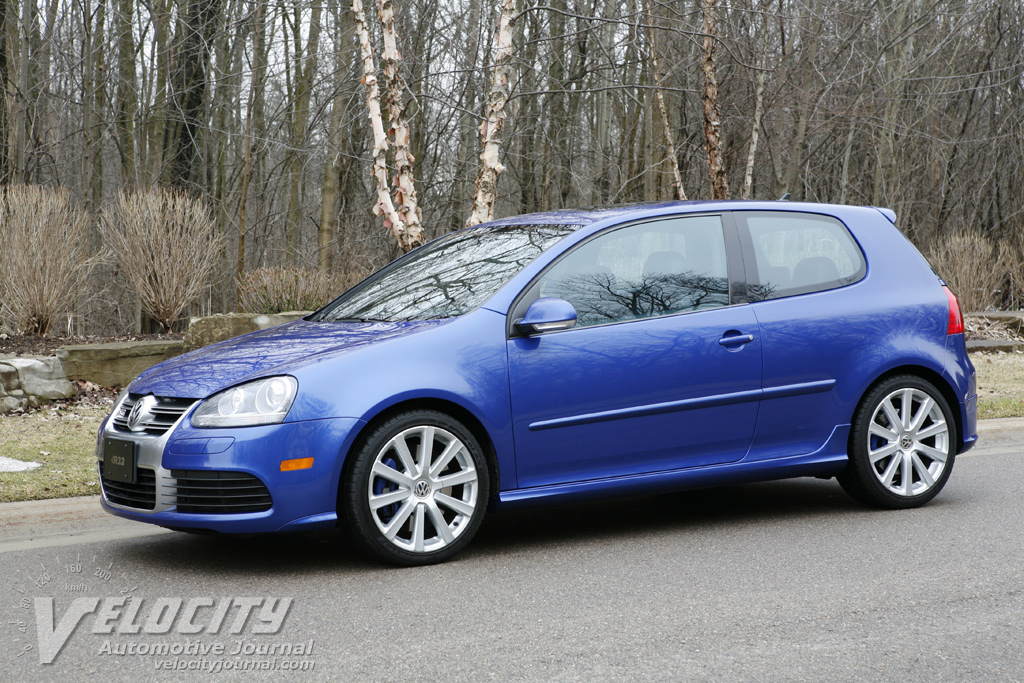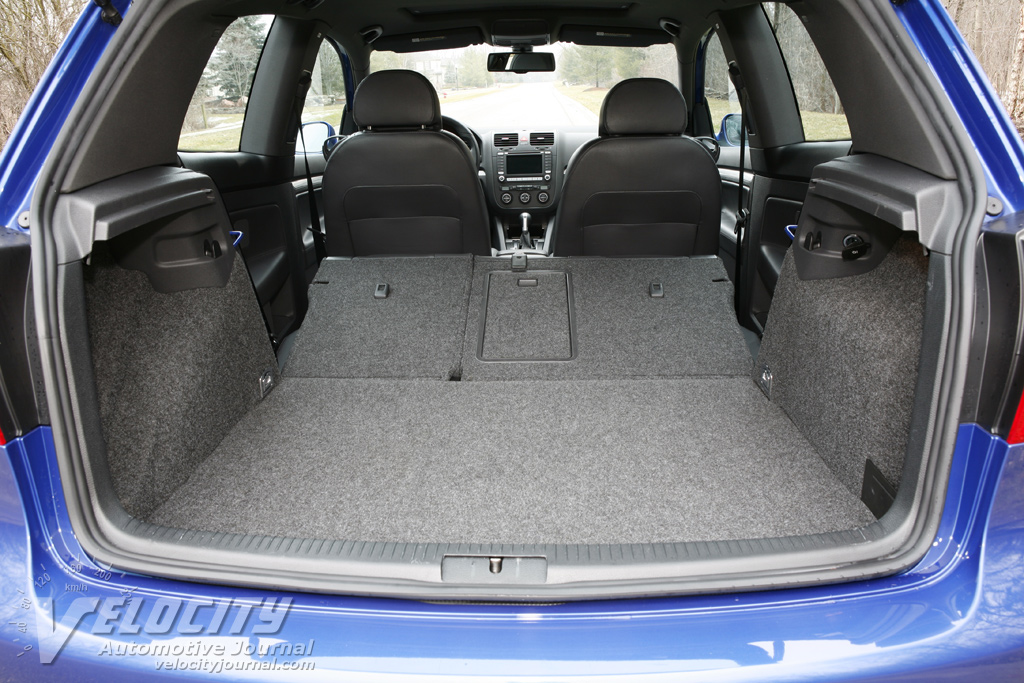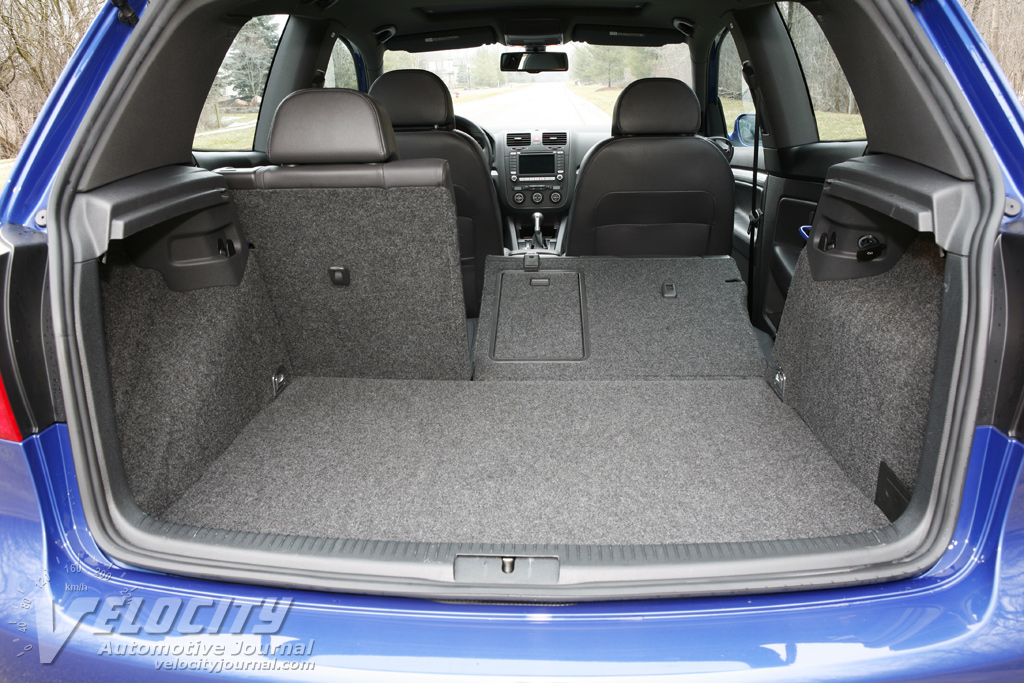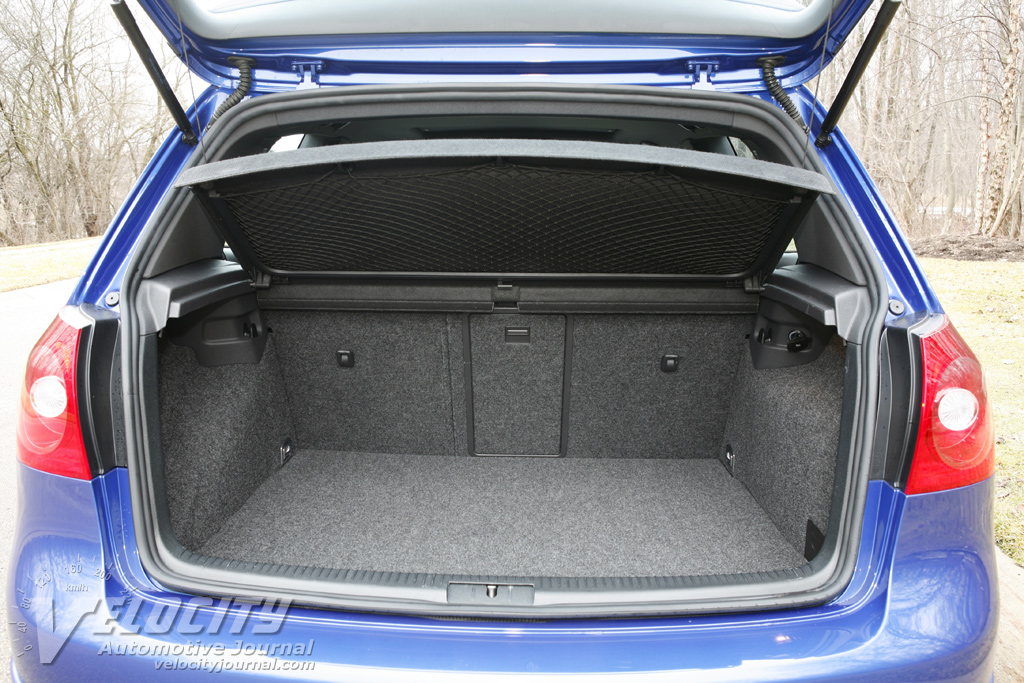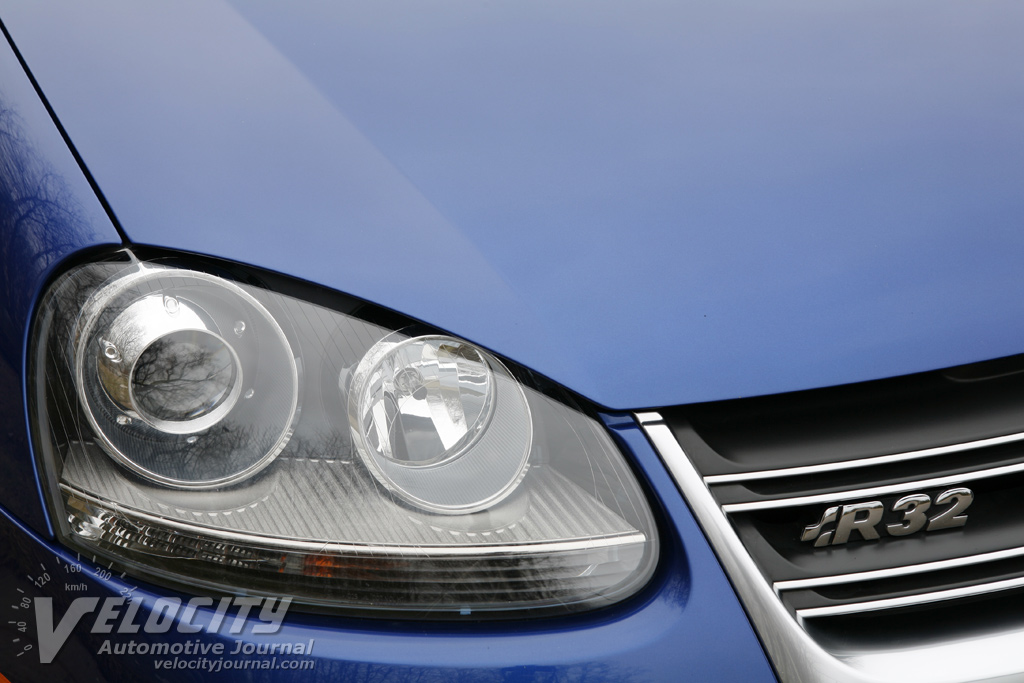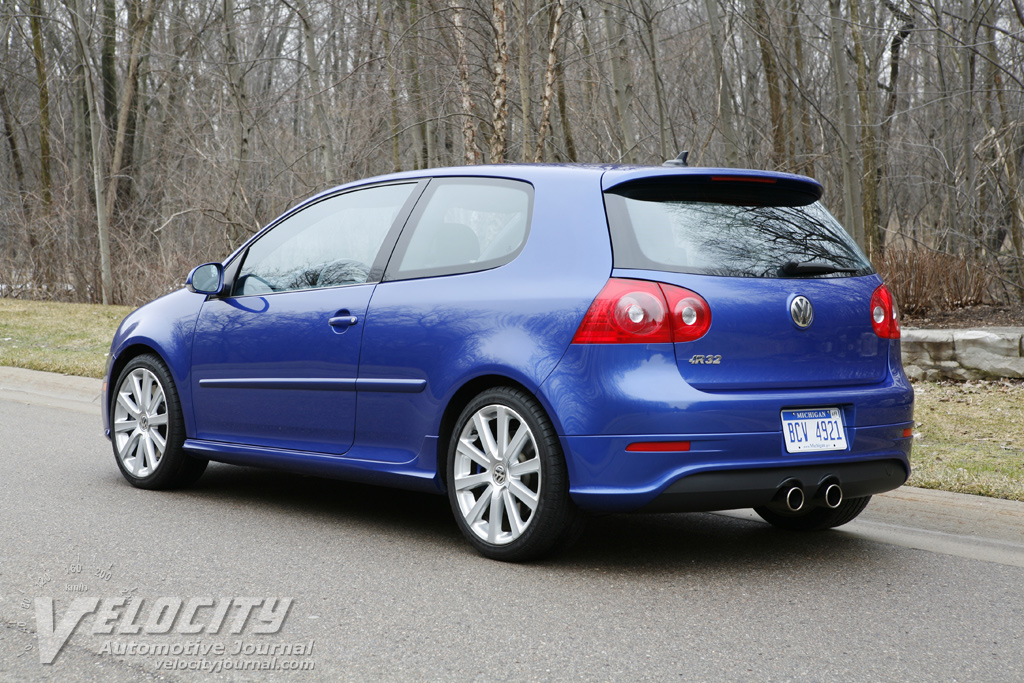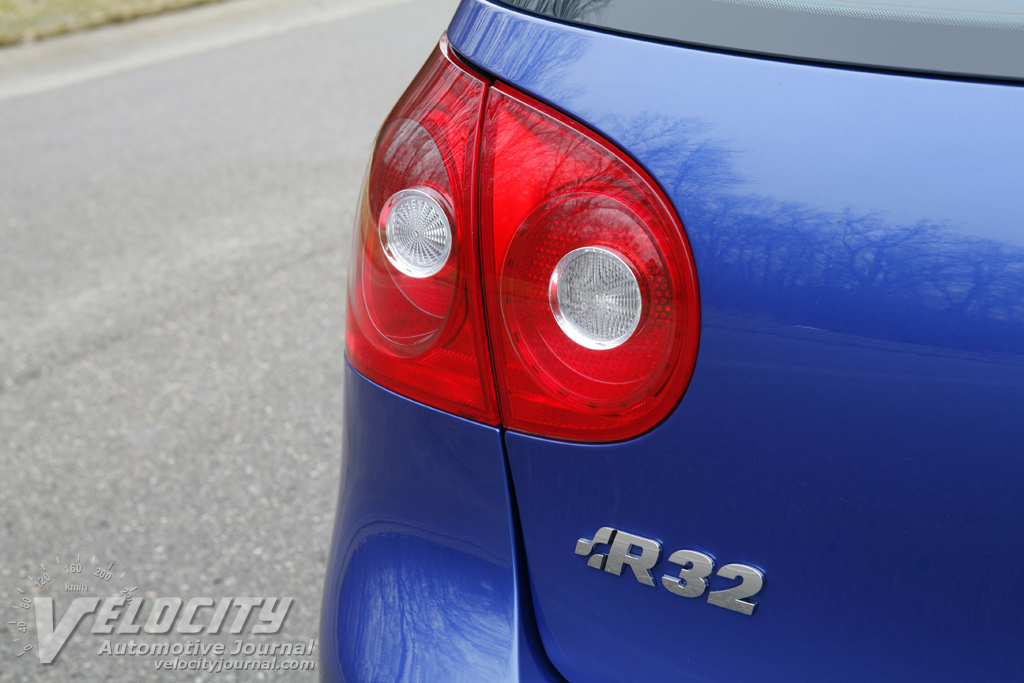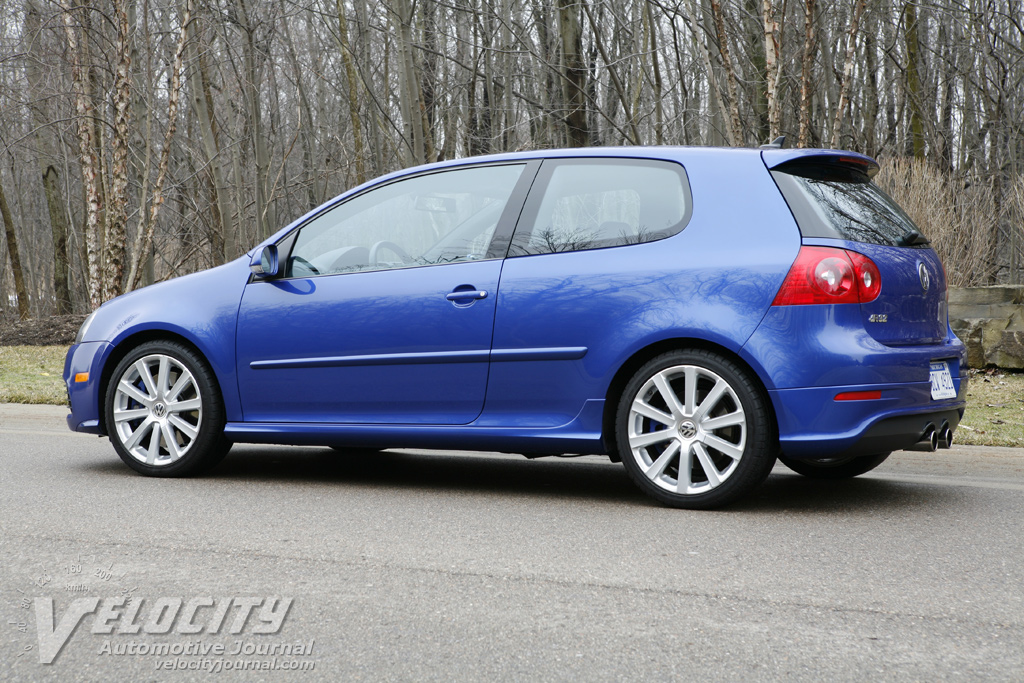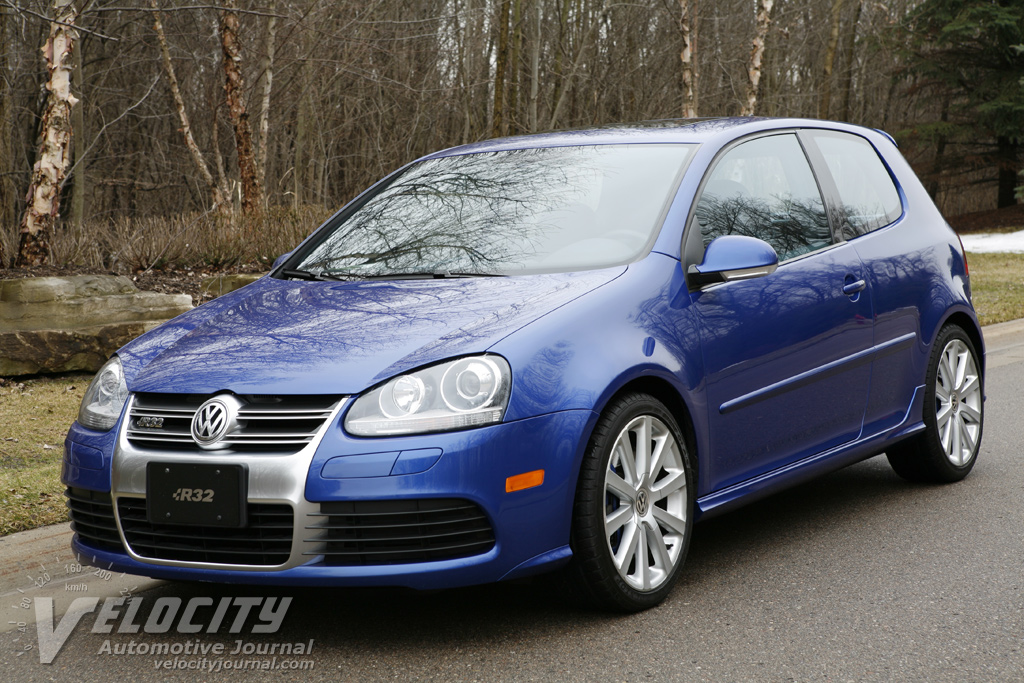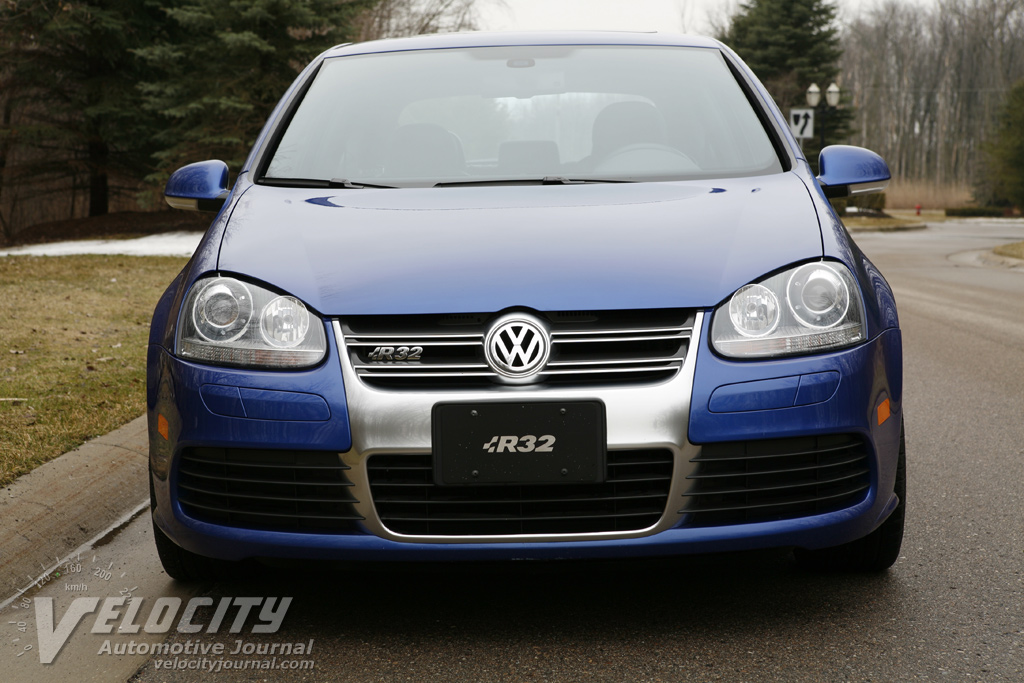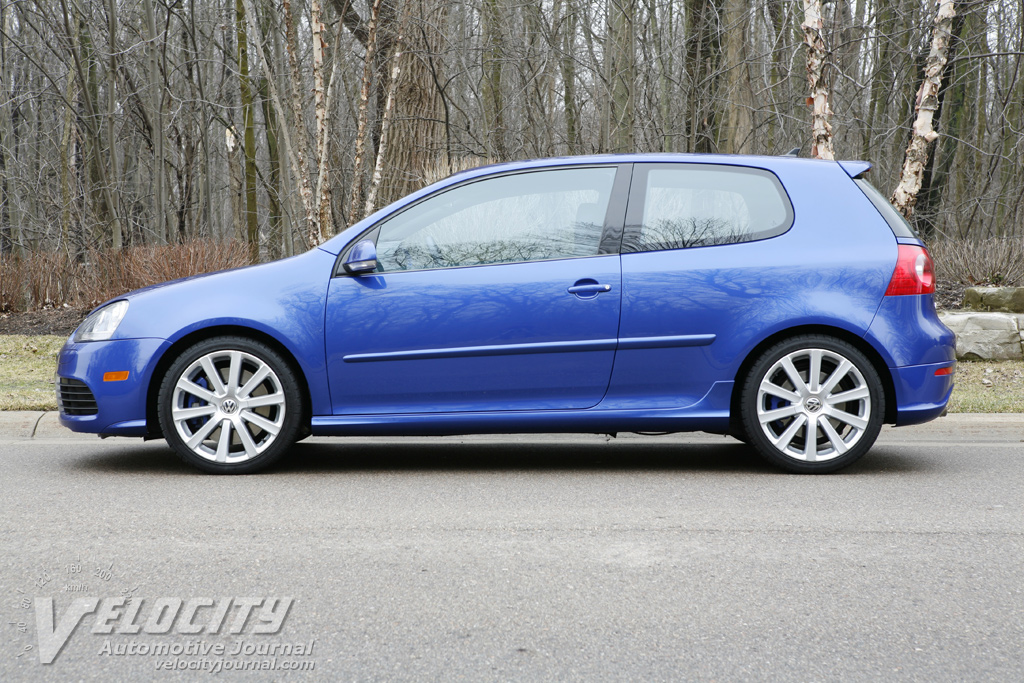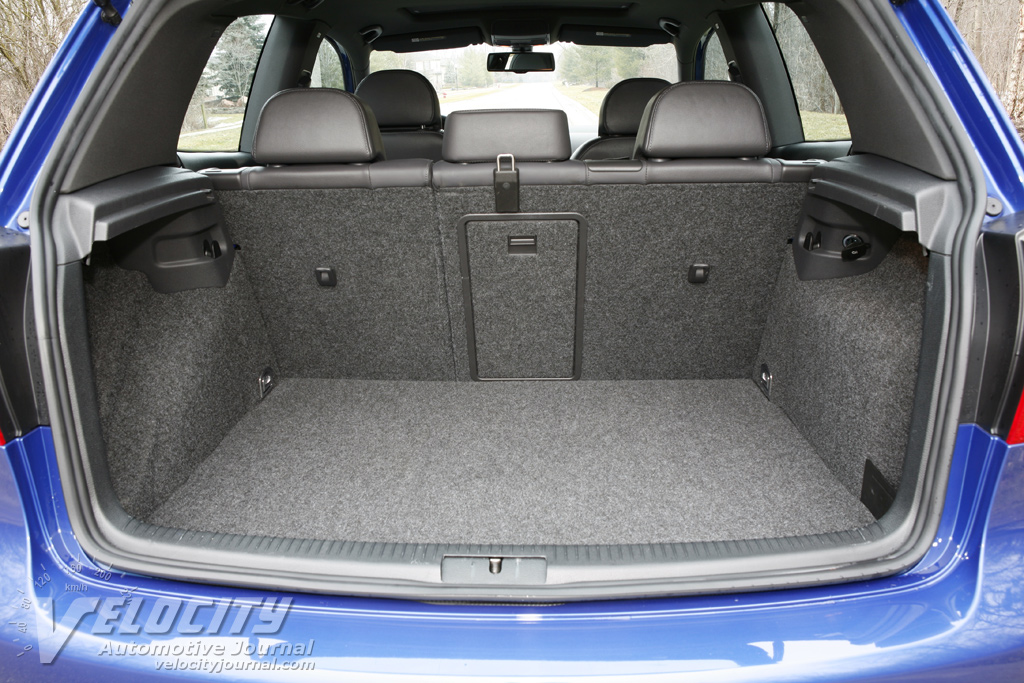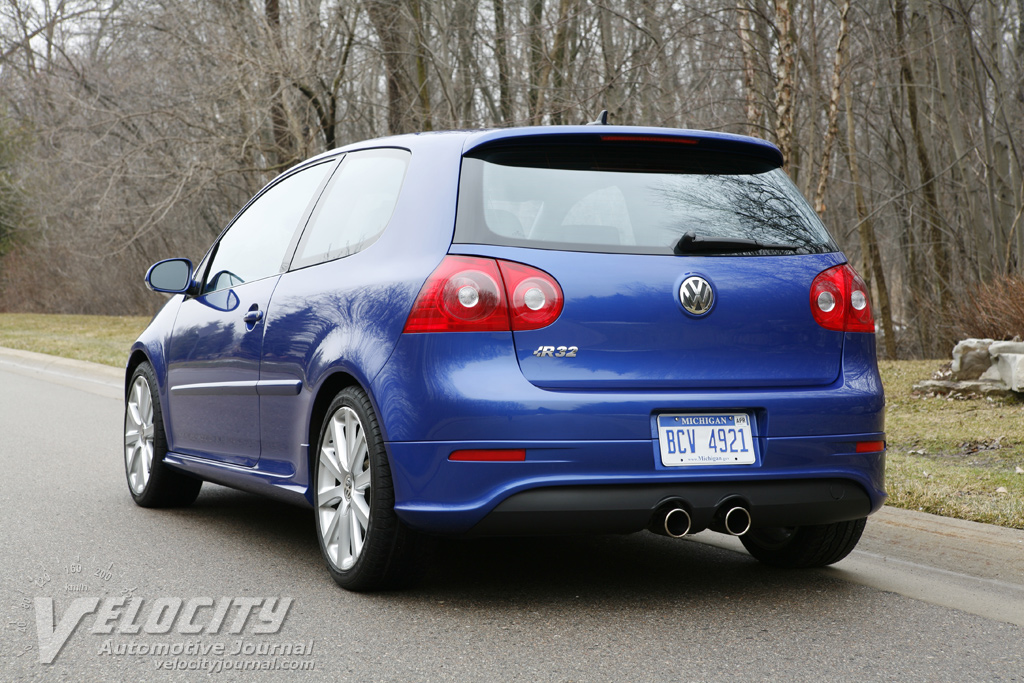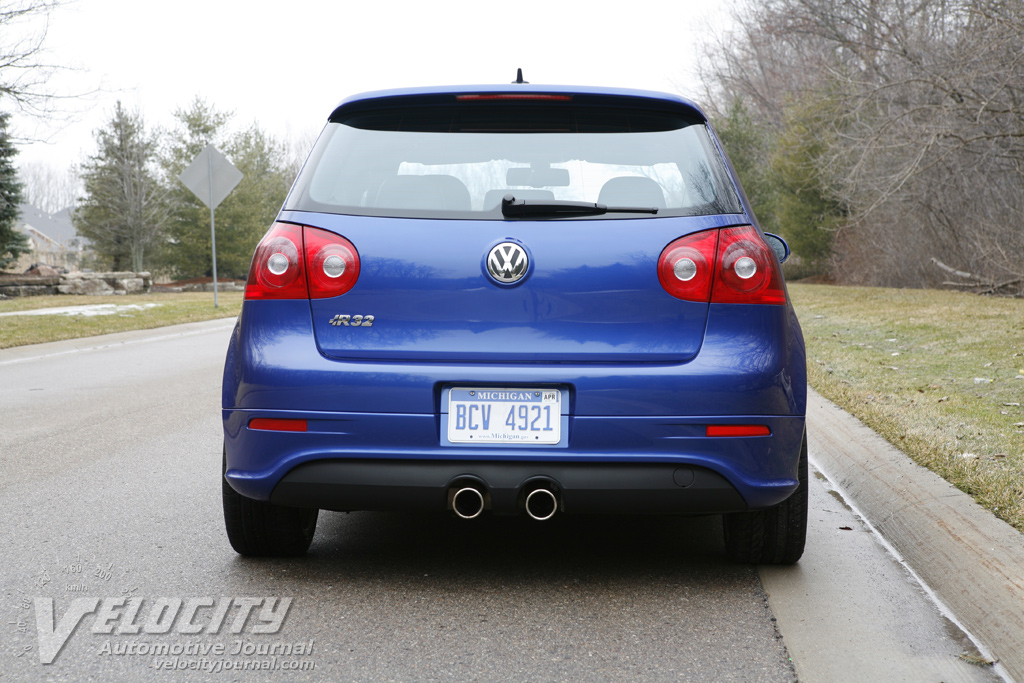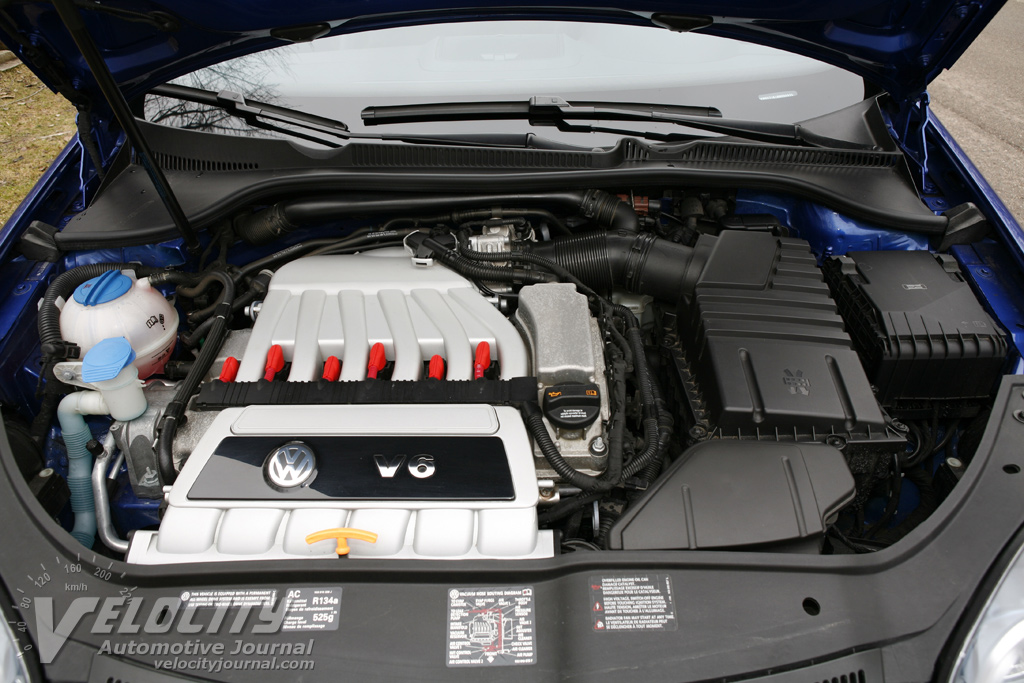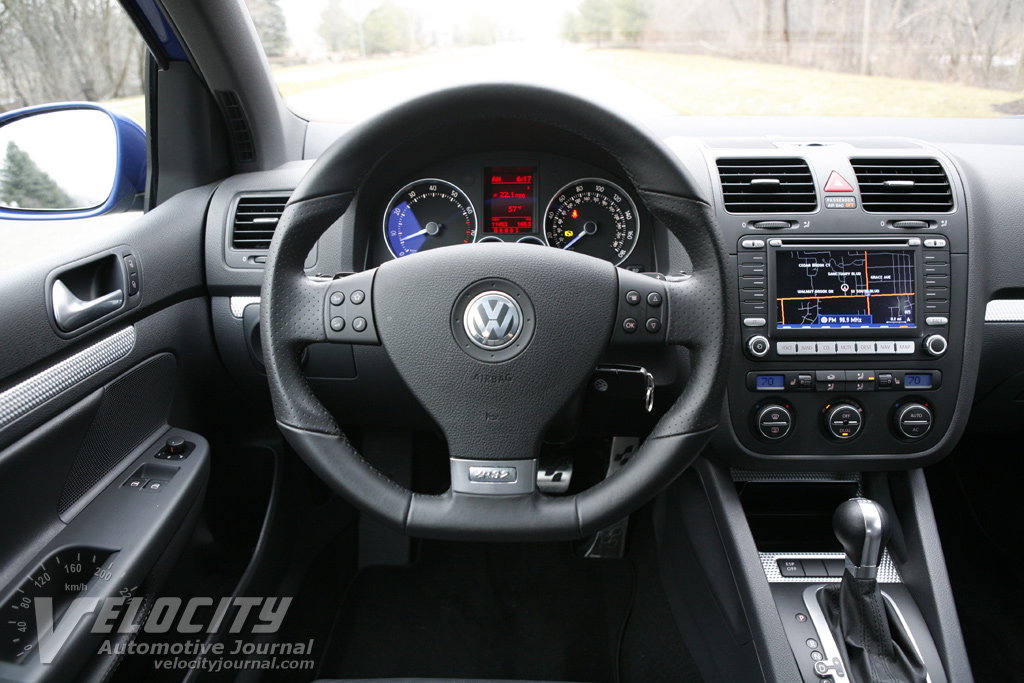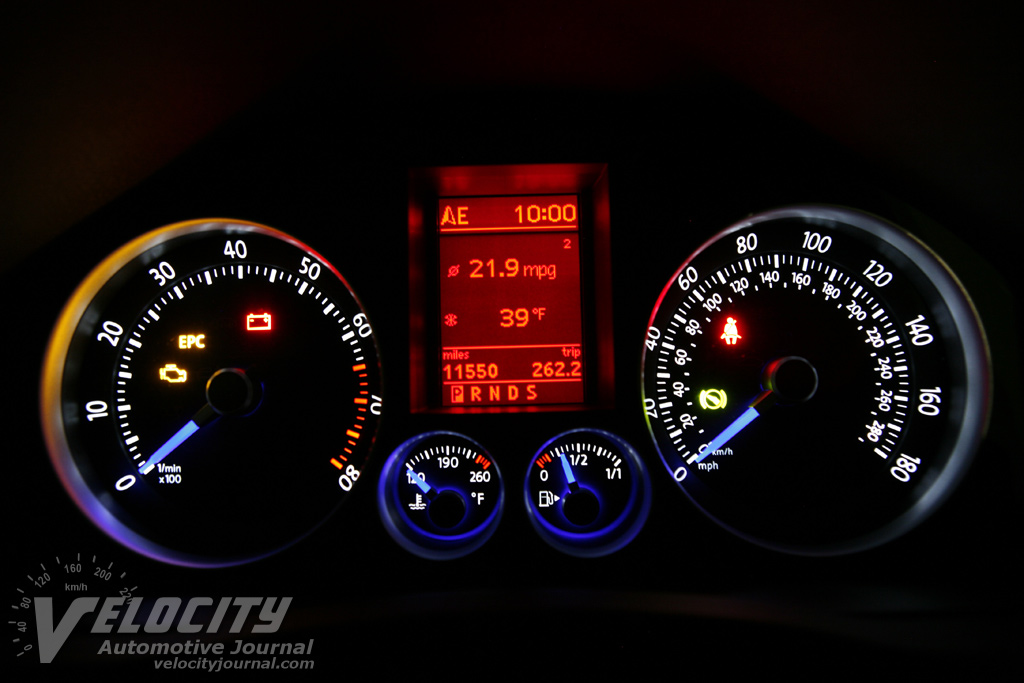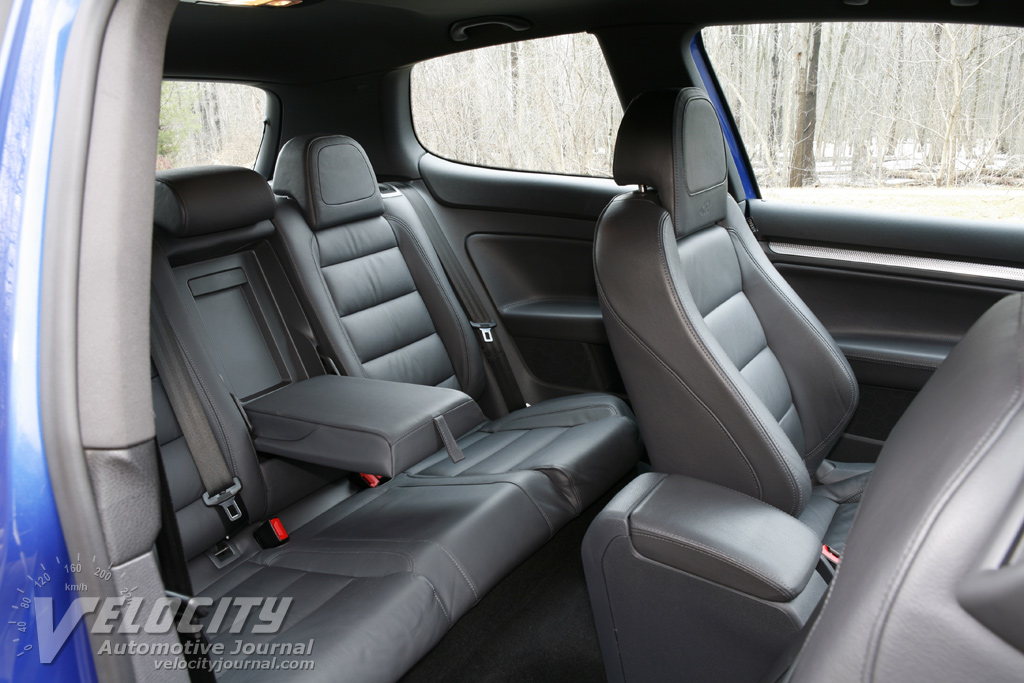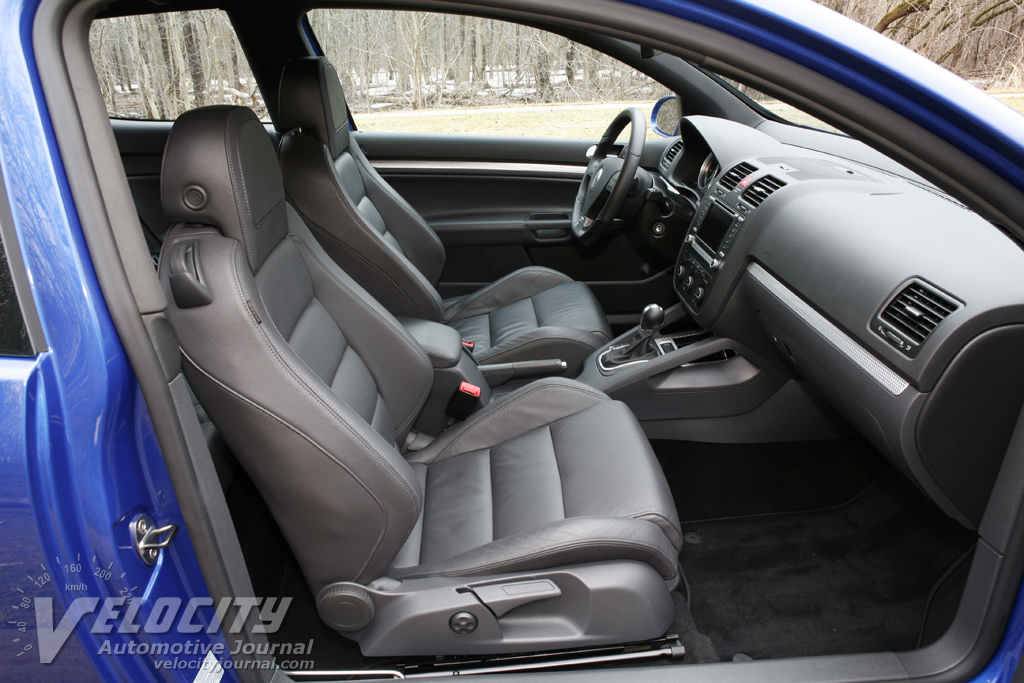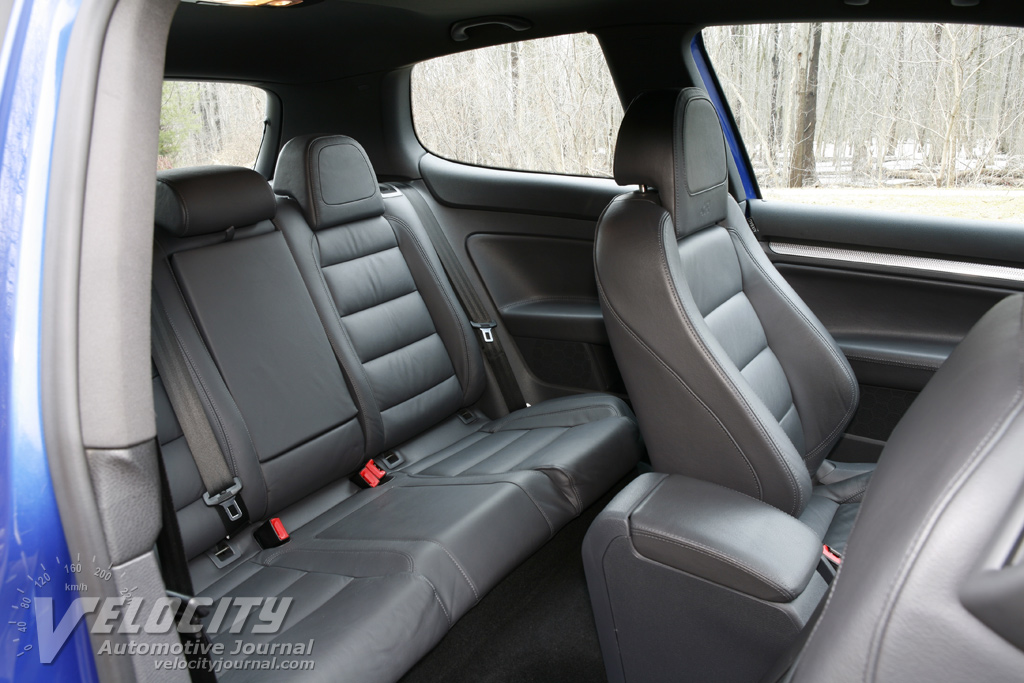2008 VW R32
04/03/2008
Shahed Hussain
At the top rung in the Rabbit (Golf) lineup, the R32 is arguably the most sporting Volkswagen sold in the US. The all-wheel drive R32 shares its driveline and platform with its upscale cousin, the Audi A3. To keep the A3 and R32 from cannibalizing sales from each other in the US, the Audi is only sold as a 5-door hatchback, while the R32 and front-wheel drive GTI share a 3-door body style.
Volkswagen charges $32,990 for the base R32 vs. the GTI, which starts at $22,990. The extra money buys the 250-bhp 3.2L VR6 powerplant, 6-speed DSG (Direct-Shift Gearbox), sport seats, 18-inch alloy wheels, Xenon headlights, sunroof, rear spoiler, and several other options. A similarly equipped GTI would cost $31,235, but would lack the Xenon headlights, VR6 engine, and AWD which are unique to the R32. In our opinion, the $1,755 premium for the R32 is well worth the difference for the superior performance and exclusivity of the R32. In contrast, a comparably equipped Audi A3 S-line quattro would top $40K, so the R32 actually is a decent value relative to its corporate siblings. Our tested R32 was also equipped with the optional DVD navigation system and iPod adapter ($1,800). The total sticker price came to $35,440, including the $650 destination charge.
As the flagship hot hatchback from VW, the R32 invites comparison with its Japanese competition: the 305-bhp Impreza WRX STI and 291-bhp Lancer Evolution GSR. Both turbocharged Japanese sport compacts are more expensive than the normally aspirated VW: the Subaru starts at $34,995, while the Mitsubishi has a list price of $33,665. To get the 6-speed dual-clutch SST transmission in the Mitsubishi requires moving up to the Lancer Evolution MR ($38,665); the Impreza STI is only available with a 6-speed manual. So from a value perspective, the 250-bhp R32 comes out ahead of the STI and Evolution MR, but suffers a power deficit relative to the Japanese duo.
To visually distinguish the R32 from the GTI, Volkswagen added several exclusive interior features. The most notable differences include a polished R32 logo on the steering wheel, machine-turned metallic trim on the dashboard and center console, and R32 logos embroidered on the front seat headrests. The R32 also gets aluminum brake and throttle pedals not offered on the GTI. Exterior enhancements include a R32-specific front fascia; body color side skirts, center-mounted dual exhausts, unique 18-inch alloy wheels, blue brake calipers, and a subtle rear spoiler further separate the R32 from the GTI.
The R32 has a straightforward set of gauges, which include an 8,000 RPM tachometer, 180-MPH speedometer, as well as smaller coolant temperature and fuel gauges. A configurable driver information display shows trip computer data, exterior temperature, compass direction, and the DSG transmission mode. Audio and Bluetooth phone control buttons are on the steering wheel spokes. Paddle shifters for the DSG are conveniently mounted behind the steering wheel: tug the right paddle to upshift, or the left paddle to downshift; alternatively, use the console-mounted shifter to select gears manually.
An LCD screen on the center stack combines audio and navigation system functions; the display is not a touch screen, but uses an array of buttons to configure the navigation system. Included with the optional navigation system is an iPod adapter in the center console bin. The navigation system replaces the 6-CD changer with a DVD-ROM; however compact discs cannot be played in the DVD-ROM. Knobs and buttons for the climate control system and heated seats are located below the audio/navigation system. Front passengers can store beverages in the dual cupholders next the handbrake on the center console or the door pockets; additional cupholders are located behind the center console for rear seat occupants. An overhead console compartment holds sunglasses.
The standard heated leather sport seats provide superb support and comfort. Aside from the standard manual reach and rake controls, both front seats are also height adjustable with power lumbar support; prominent torso and thigh bolster keep the driver and front passenger securely in place. Rear occupants are also treated to supportive seats, although the center position is too flat to be comfortable for extended periods. Passenger under 6-ft. tall will find adequate headroom and legroom in the back seats. The 60/40 split rear seats fold down nearly flat; a center pass-through allows the R32 to transport skis and rear passengers.
Volkswagen's transversely mounted 3.2L V-6 cranks out 250-bhp @ 6,300 RPM and 236 lb.-ft. from 2,500-3,000 RPM. The standard 6-speed DSG distributes power to all four wheels via the standard 4Motion all-wheel drive system; the Haldex-sourced design can transfer up to 100% of engine torque to the rear wheels. The VR6 engine has ample midrange torque, so the R32 feels extremely responsive in city driving. On the highway, throttle response is respectable, but the R32 doesn't accelerate as rapidly as we expected. A glance at the curb weight explains why: the R32 weighs in at 3,547 lbs. vs. 3,151 lbs. for a similar DSG-equipped GTI. VW claims the R32 will accelerate to 60 MPH in 6.5 seconds, a few tenths faster than the 6.9 seconds required by the DSG GTI. Top speed is restricted to 130 MPH for both the R32 and GTI.
Although some customers may desire a traditional manual gearbox, the 6-speed DSG is the only transmission available. Fortunately, the smooth-shifting dual-clutch gearbox from BorgWarner makes a conventional manual transmission redundant. Aside from occasional jerkiness at low speeds, the close-ratio DSG is nearly as seamless as a conventional torque converter automatic, but shifts as fast as a conventional manual gearbox. According to the EPA, estimated mileage for the R32 is 18/23 MPG (city/hwy.); we averaged 22 MPG in mixed city and highway driving.
The R32 shares its basic suspension layout with the GTI: MacPherson struts in front, and a subframe-mounted four-link setup in back. Stabilizer bars at the front and rear axles minimize body roll. Braking duties are handled by vented discs at all four wheels; ABS, ESP (Electronic Stability Program) and Brake Assist are standard. We tested an R32 shod with optional 225/40R18 Dunlop SP Sport 01 M+S tires, mounted on 18-inch alloy wheels; 225/40R18 summer performance tires are standard.
As is typical for German sport sedans, VW tuned the R32 suspension with firm damping, but relatively soft spring rates. Ride motions are controlled without being harsh, but the R32 pitches over sharp bumps on the highway. Braking capabilities are superb, with firm pedal feel and sure stops. The electro-mechanically assisted steering provides accurate feedback of road surfaces; VW dialed down power assist to improve high speed stability, but even at parking lot speeds, the steering reinforces the impression that the R32 is a heavyweight in a compact package. Compared to the lighter GTI, the R32 trades lively handling for superior high speed stability.
Volkswagen realizes that the R32 is a niche product: US allocation is limited to only 5,000 vehicles annually. Previous R32 and current GTI owners are the intended target audience for the new R32, which offers a combination of a refined powertrain, solid handling, and superb interior design. VW enthusiasts should seriously consider the R32 if they intend to buy a loaded GTI, because the price differential between the two models isn't that substantial. For other customers in the market for a premium sport compact, the R32 is an alternative to the more expensive Impreza STI and Lancer Evolution MR; the Volkswagen gives up raw performance for a sizable edge in overall refinement relative to the Subaru and Mitsubishi. So if all-out performance isn't your overriding priority and you value hatchback practicality, the R32 is worth a look.

